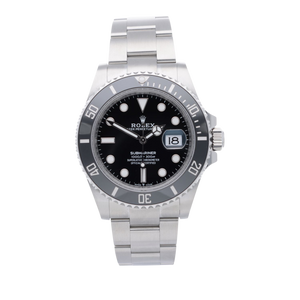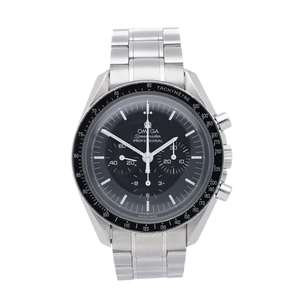The watchmaking town of Glashütte
When you read or hear about Glashütte, most people associate it with a beautiful small town in the Saxon Switzerland-East Ore Mountains district of Saxony. However, connoisseurs immediately associate "Glashütte" with world-renowned watch manufacturers that originated in that very small Saxon town. In the following, we will explore the history of the small town of Glashütte and its current significance for the watch industry.
Excursion into history
The origins of today's town of Glashütte date back to the 15th century. "Glaßehutte" was first documented in 1445. The name "Glashütte" was taken literally: The area was rich in iron, making it a natural place to produce potash glass. At the end of the 15th century, silver ore was discovered near Glashütte.
A strong economic boom followed. However, in the following centuries, mining declined in importance and was finally discontinued in 1875. While mining declined, a completely new, equally important industry grew.
Saxony and the watch industry
In the 19th century, Saxony was something of a watchmaking stronghold in Germany, with the focus clearly on the small town of Glashütte. In addition to well-known names such as Union Glashütte, Mühle-Glashütte , and Lang & Heyne, the city also produced the more well-known brands A. Lange & Söhne and Glashütte Original .
The watch industry originated with Ferdinand Adolph Lange, a German watchmaker, inventor, entrepreneur, and regional politician. In the early 1840s, Lange was traveling through Europe. Among other places, he visited the Swiss "Vallée de Joux," the "Valley of the Watchmakers." Lange was immediately fascinated by the Swiss concept: Swiss watchmakers obtained the components for their watches from specialized outside companies and then assembled them into a complete watch. The publisher then sold the finished product.
Transfer of the Swiss concept

After returning home, Lange was determined to transfer the successful Swiss concept to his homeland. Motivated by start-up funding from the Saxon government, he saw Glashütte as an ideal location for a healthy watchmaking industry. Lange subsequently founded the first watchmaking workshop in Glashütte in 1845 and began training the first watchmakers.
The latter subsequently went into business for themselves and concentrated on manufacturing the individual parts needed to assemble a watch. These were delivered to Lange's company and assembled. Many other entrepreneurs followed Lange's example in the years that followed. It wasn't long before watchmaking became one of the region's most important industries.
The Second World War and its consequences
Approximately 100 years after the founding of the first watchmaking workshop in Glashütte, the town suffered a severe blow: On May 8, 1945, the last day of World War II, the Russian Air Force bombed the small town of Glashütte. The latter was partially destroyed. After the end of World War II, the town was divided: One half belonged to the Russian sector, later to the GDR, and the other half to the Allied sector, later to West Germany.
The companies in the Russian sector were expropriated, and the local watch manufacturers merged into the VEB Glashütter Uhrenbetriebe (VEB Glashütte Watch Factory). The new company was called GUB for short, but its products were sold under the brand name "Glashütte." Glashütte Original still uses this name today. The GUB brand enjoyed international demand and sold wristwatches and quartz watches with great success.
The fall of the Wall
Another dramatic event for the entire region was the fall of the Berlin Wall. The GDR was, quite literally, history, and with its demise, many state-owned companies were privatized. As part of this privatization, the GUB was also transferred and renamed itself Glashütter Uhrenbetriebe GmbH. The company now sold its own watches under the "Glashütte Original" brand. However, hit by the so-called quartz crisis, the company was acquired by the Swatch Group in 2000.
Brands and the associated rights, such as A. Lange & Söhne, were repurchased from their former owners, and production and distribution continued under legally separate companies. As part of the privatization process, many other brands, in addition to A. Lange & Söhne, gained significant momentum.
Glashütte and its watchmaking companies today

Today, these "high-flyers" are true heavyweights in the market for high-quality brand watches. This includes companies such as A. Lange & Söhne, Glasütte Original, Union Glashütte, Nomos Glashütte , Bruno Söhne, Tutima, and Moritz Großmann.
Brand-name watches made in Glashütte and equipped with a genuine in-house movement remain highly sought-after. They are characterized by a particularly high standard of quality and boast distinctive aesthetic and design features.
Why are watches from Glashütte so special?
Watches from Glashütte are characterized by several special features that cannot be found in other watchmakers or watch manufacturers. For example, watches from Glashütte Original feature blued screws, beveled edges, and hand-engraved decorations.
Another special feature appreciated by many watch enthusiasts is the so-called swan-neck fine adjustment. This ensures a more finely regulated balance and simultaneously increases the watch's accuracy. Also worthy of mention is the so-called three-quarter plate: This design dates back to Adolph Lange and remains one of the hallmarks of many Glashütte watches to this day.
Is it worth buying a watch from Glashütte?
Buying a watch from Glashütte is definitely worthwhile. These watches boast very high quality and first-class watchmaking craftsmanship. However, they rarely reach the price ranges demanded by luxury brands Paiget, Rolex, Cartier, and the like. For this reason, they represent a high-quality alternative to many other watch brands in the higher price segment.
Similar to other luxury brands, purchasing a watch from Glashütte can be considered an investment. Watches from local companies and brands are highly sought after internationally and have been steadily increasing in value for decades. Wristwatches from A. Lange & Söhne, Glashütte Original, and Nomos Glashütte, for example, are very popular.
Conclusion
While the history of the small town of Glashütte has been marked by its ups and downs, fate ultimately proved kind to it. Watches from Glashütte enjoy an excellent reputation worldwide – and that's not likely to change anytime soon. Anyone currently considering purchasing a new wristwatch should consider a brand from the heart of the German watch industry. It's a sound and sustainable investment.
This post is also available in: English















